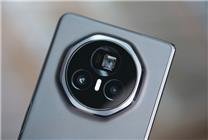Summary
- Apple has shifted the material of the iPhone 17 Pro series from titanium to aluminum, offering several advantages.
- The customized aluminum alloy enhances thermal conductivity and reduces weight, allowing for a more efficient design.
- CEO Tim Cook has expressed a preference for the vibrant orange version of the iPhone 17 Pro.
Apple Shifts from Titanium to Aluminum: A Strategic Move for the iPhone 17 Pro
In a recent media interview, Apple’s hardware engineering head John Ternus discussed the strategic decision to transition the iPhone 17 Pro series from titanium to aluminum. This bold move has sparked various conversations among tech enthusiasts and experts, leading to the clarification that there is no reversal in Apple’s direction.
Advantages of Aluminum Alloys
Ternus illuminated two key benefits of the switch to a customized aluminum alloy:
-
Enhanced Thermal Conductivity: The specialized aluminum alloy boasts thermal conductivity that is 20 times greater than that of titanium. This property significantly improves heat dissipation, which is crucial for maintaining the device’s performance during heavy use.
- Lightweight Design: Aluminum’s lighter weight allows for a better balance in device design, facilitating a larger battery payload without compromising on performance or user experience. This aspect is vital in an era where battery life remains a top priority for consumers.
Ternus further noted that the anodizing process enabled by aluminum enhances the aesthetic appeal and durability of the iPhone 17 Pro, making it not just functional but also visually striking.
Tim Cook’s Insights on Design Choices
Apple CEO Tim Cook has also weighed in on the design elements of the iPhone 17 Pro, openly expressing his fondness for the new orange color variant. This preference signals Apple’s commitment to not only embracing technological advancements but also catering to consumers’ preferences for diverse and appealing designs.
Retaining Titanium in iPhone Air
Interestingly, while the iPhone 17 Pro series takes a new direction with aluminum, the iPhone Air continues to feature the titanium bezels seen in previous Pro models. This decision highlights Apple’s strategy of providing variations that cater to different consumer needs while maintaining a sense of continuity in product lines.
A Thoughtful Evolution
Apple’s choice to switch materials reflects a deeper understanding of consumer demands for innovation and durability. The decision is not merely practical; it also encapsulates Apple’s ongoing commitment to enhancing user experience through meticulous engineering and design considerations.
Conclusion
As the smartphone market continues to evolve, Apple’s decisions regarding material choices and device functionalities remain paramount in setting trends. The transition from titanium to aluminum for the iPhone 17 Pro series illustrates Apple’s commitment to blending cutting-edge technology with user-centric design. The popularity of the new features and design choices will be closely monitored as they hit the market, and Apple enthusiasts worldwide await further innovations.





